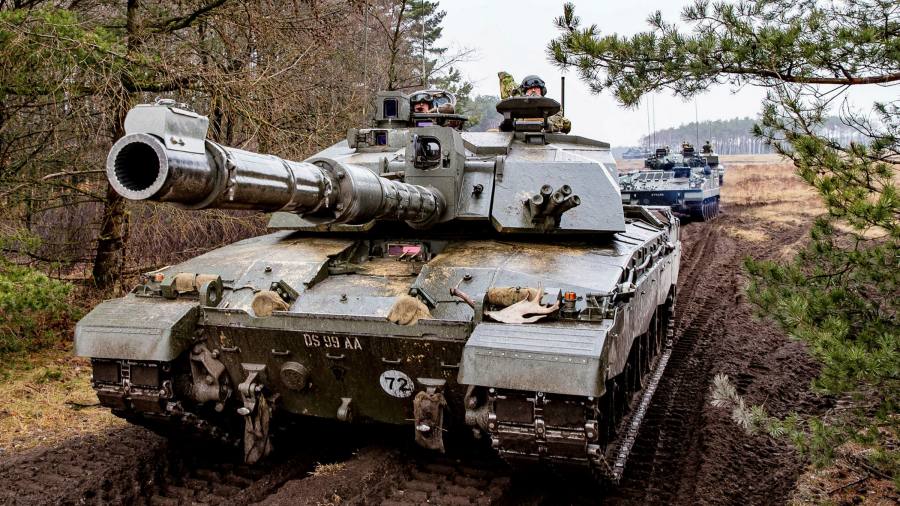[ad_1]
UK defence chiefs are imposing sweeping cuts across all three armed services, retiring older tanks, warships and aircraft and cutting the army by nearly 10,000 personnel in an effort to prepare for an era of technological warfare.
The strategy, announced on Tuesday, is the military contribution to Downing Street’s new integrated review of defence, security and foreign policy. This is the blueprint for Britain’s ambition to engage more with international allies to counter growing threats from Russia and China, in particular the risk of cyber attacks and the use of artificial intelligence on the battlefield.
Major spending announcements in the Ministry of Defence paper — titled “Defence in a Competitive Age†— include £5bn for a new generation of military satellites to enhance space capabilities, and £2bn over the next four years for a combat aircraft system being developed by BAE Systems.
However, the entire fleet of more than 700 Warrior infantry fighting vehicles is to be axed, and a third of the UK’s Challenger II tanks. In total, more than 100 older aircraft are being retired, including the entire Puma helicopter fleet, while the number of frigates and destroyers will drop from 19 to 17.
In one of the most symbolic changes, the army will be cut by 9,500 to a force of 72,500 by 2025. Defence officials insist the previous force target of 82,000 had not been met and the current figure was closer to 76,000. Still, this is the smallest full-time army the UK has had for centuries.
In the foreword to the new strategy, Ben Wallace, defence secretary, said it was “always tempting to use the shield of sentimentality to protect previously battle-winning but now outdated capabilitiesâ€.
“Such sentimentality, when coupled with over-ambition and under-resourcing, leads to even harder consequences down the line,†he wrote, adding that the armed forces “must think and act differentlyâ€. This would involve moving from “mass mobilisation to information age speed, readiness and relevance for confronting the threats of the futureâ€.Â
Prime Minister Boris Johnson, who announced a surprise defence funding boost of £16.5bn in the autumn, has previously revealed his desire to create a “renaissance†in British shipbuilding. According to the new strategy, investment in this area is set to double over the life of this parliament to £1.7bn a year. In the interim, two type 23 frigates will be retired, although new type 26 and type 31 frigates are scheduled to come into service later this decade.
The army’s armoured fighting capability is set for an overhaul, with a £1.3bn investment in upgrading 148 of its 227 main Challenger battle tanks, with the rest being retired. The Warrior infantry fighting vehicles will not be upgraded but will remain in service until they are replaced later this decade by the Boxer mechanised infantry vehicle.Â
The Royal Air Force received a surprise funding boost in the new strategy, with an extra £2bn for its next-generation Tempest combat jet programme, which will include both manned and unmanned aircraft and swarming technology, and will be operational from 2035.
However, the MoD paper did not offer any clarity on the timing of future orders of F35 Lightning jets, saying only that the RAF would increase the fleet beyond the 48 already ordered. Military experts have consistently said the armed forces would need a minimum of 70 to enable a credible strike capability from the Navy’s two aircraft carriers.
In the short term, a swath of older aircraft, including nine Chinook helicopters, 24 Typhoon fighters and 14 Hercules, are due to be retired.
A focus for the next decade will be the development of space assets, in response to the increased militarisation of space by Russia and China. The strategy includes £5bn in investment to upgrade the armed forces’ military communication satellites to replace the current crop, some of which are due to go out of service in the early 2020s.Â
[ad_2]
Source link






